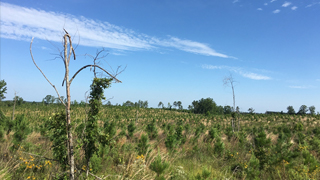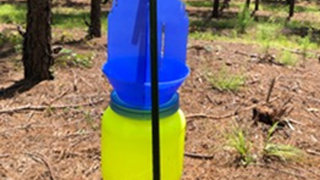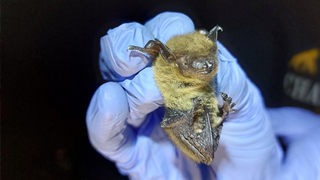 Forests in the Southern U.S.
Forests in the Southern U.S.
6.8 million acres
In 1956, we purchased our first southeastern timberlands in Mississippi and Alabama. Today, we own almost 7 million acres of timberlands across 11 southern states from Virginia to Texas. These timberlands grow on a variety of landforms, from the rich organic soils of eastern North Carolina to the shallower, rocky soils of the Ouachita Mountains in Oklahoma and Arkansas, and they cover diverse landscapes, ranging from low and broad flatwoods, hills and bottoms to steep hillsides and mountains. Yet across all this variation, these southern forests benefit from long growing seasons and a mild climate, making them highly productive.
By incorporating decades of research and operational experience, we sustainably grow vast swaths of timber while conserving important environmental attributes of these ecosystems. Throughout our southern ownership, we work to maintain or enhance diverse wildlife habitat conditions and provide a home for terrestrial and aquatic biodiversity, including a large number of federally and state-protected species and species of concern. Through the application of best management practices and implementation of forest certification standards, we protect water quality in streams, from small intermittent channels to large rivers, as well as wetlands, lakes and reservoirs. Much of our ownership is in large, contiguous blocks, which provide important wildlife habitat and water quality protection in an increasingly fragmented landscape.
FOREST MANAGEMENT
In the southeastern United States, most forests were logged and converted to agricultural uses in the 18th and 19th centuries. In the mid-1900s, an emerging conservation ethic and an increasing demand for timber products created incentives for many agricultural lands to be reforested. Much of the land we own in the southeastern U.S. was former agricultural land that was returned to forest.
We maximize wood growth and value by practicing intensive forest management on most of our ownership in this region. Our even-aged, managed pine stands are generally harvested when they reach 25 to 35 years in age, followed by site-preparation methods tailored to ensure successful regeneration of each unique harvest area. We plant our pine seedlings in rows by hand or using machines; once these trees are between 10 and 15 years old, we thin the stands to reduce competition among the remaining trees and accelerate their growth into quality sawtimber. The result is a continuous cycle of sustainable forest management.
ENVIRONMENTAL STEWARDSHIP
As we work to maximize wood production, we carefully follow sustainable forest management practices that ensure the protection of environmental quality and conservation of water, soil and wildlife resources. Our environmental management includes measures to protect aquatic ecosystems and provide habitat for threatened, endangered or sensitive species, such as the Louisiana pinesnake, Red Hills salamander, gopher tortoise, red wolf and bald eagle. Our southern forests also provide habitat for bird species that rely on young forests, such as prairie warblers; aquatic-dependent species, such as spotted turtles; and species that require a variety of habitat types, such as bats.
Our primary conservation measure to protect aquatic habitat in our forests is the establishment of forested buffers along water bodies. Trees retained in buffers are either never harvested or selectively harvested to achieve site-specific conservation objectives.
Across our nearly 7 million acres, there are countless examples of unique and critical habitat being protected or improved by our practices. In North Carolina, for example, we have protected more than 5,000 acres of our land across eight counties that contain remnants of the original, old-growth Atlantic coast forest, an extremely rare forest type in today’s modern landscape. The North Carolina Coastal Land Trust and The Nature Conservancy hold easements that prevent future development on these lands. Additionally, we have donated easements and conserve additional land through the North Carolina Natural Heritage Program, including our Cool Springs Environmental Education Center, which hosts more than 2,500 students in a typical year.
RESEARCH AND PARTNERSHIPS
To manage our forests sustainably, we continue to learn more about upland and riparian ecosystems and how our activities affect them. We partner with other organizations to fill knowledge gaps and ensure that our practices are consistent with the best available science.
We are engaged in many research projects in our southern forests. Recent research includes evaluating landscape-scale assessments of forest birds in Mississippi, pollinator communities in Georgia and winter bat communities in the Southeastern Coastal Plain.
Assessing avian diversity in Mississippi

Photo courtesy: Craig Sklarczyk, Mississippi State University
We supported a study examining breeding-season avian communities in regenerating and mid- to late-succession loblolly pine stands in east-central Mississippi. By improving our understanding of how habitat patterns influence birds in working pine forests, managers can better integrate conservation measures, particularly for at-risk species, while simultaneously achieving land-use objectives.
Maintaining insect pollinators in Georgia

Photo courtesy: Christine Favorito, University of Georgia
We are participating in a study to learn more about the effects of stand-level characteristics on insect pollinator populations and communities in managed forests. Through this work, we aim to discern which attributes of forest structure and composition best support bees and flies, the two most important insect pollinator taxa.
Evaluating bat activity and habitat in the U.S. Southeast

Photo courtesy: Santiago Perea, University of Georgia
We are working to evaluate factors influencing winter activity and foraging habitat of bat communities on working forestlands in the Southeastern Coastal Plain. Our results will inform managers of habitat features important to wintering bats, including those affected by white-nose syndrome, to expand conservation opportunities in these working forests.
We conduct our own research and collaborate with and support outside scientists from universities and agencies across many disciplines. We provide financial support and site access for important ecological research and help with data collection and logistics, when appropriate. We communicate these findings to our foresters and operational teams to ensure everyone understands the importance of high-quality implementation of best management practices.
By using this website, you agree to our Privacy Policy. California residents: See our CCPA Privacy Notice for details on what personal information we collect and for what purposes.



